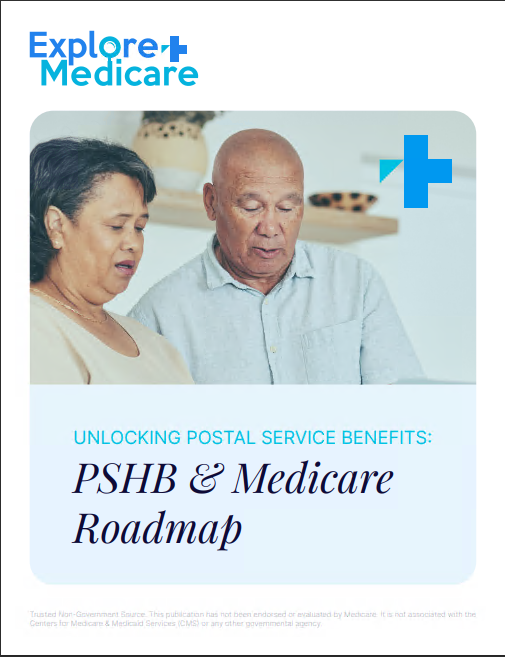Key Takeaways
-
In 2025, Medicare still leaves significant out-of-pocket costs for you to manage, including copayments, deductibles, and services that are only partially covered or not covered at all.
-
Understanding the real financial structure of Medicare will help you plan more realistically and avoid unexpected expenses during retirement.
Why Medicare Isn’t “Free” Even After You Enroll
Many people believe that once they enroll in Medicare, healthcare becomes virtually cost-free. That is far from the truth. While Medicare provides essential coverage, it is not a comprehensive healthcare solution. You are responsible for multiple forms of cost-sharing that can quickly add up—especially if your health needs grow over time.
Medicare was never designed to cover 100% of medical expenses. Instead, it works as a shared-cost program where you take on part of the financial burden through deductibles, copayments, coinsurance, and premiums.
Let’s break down where your money actually goes.
Medicare Part A: Hospital Costs Aren’t Fully Covered
Medicare Part A is often described as hospital insurance. It helps cover:
-
Inpatient hospital care
-
Skilled nursing facility care (after a qualifying hospital stay)
-
Limited home health care
While many enrollees don’t pay a premium for Part A due to sufficient work history, you are still on the hook for deductibles and coinsurance.
Here’s what you pay in 2025:
-
Inpatient hospital deductible: $1,676 per benefit period
-
Daily coinsurance:
-
Days 1–60: $0
-
Days 61–90: $419 per day
-
Days 91 and beyond: $838 per day (using lifetime reserve days)
-
-
Skilled nursing facility coinsurance: $209.50 per day (days 21–100)
If your hospital stays stretch beyond these thresholds, your out-of-pocket costs grow dramatically.
Medicare Part B: Outpatient Services with Monthly Costs
Medicare Part B covers outpatient services, including:
-
Doctor visits
-
Preventive care
-
Durable medical equipment
-
Laboratory services
-
Mental health care
Unlike Part A, Part B has a standard monthly premium, which in 2025 is $185. Higher-income earners pay more due to the Income-Related Monthly Adjustment Amount (IRMAA).
Additional costs under Part B include:
-
Annual deductible: $257
-
Coinsurance: 20% of the Medicare-approved amount for most services after meeting your deductible
What’s crucial to note is that there is no out-of-pocket maximum under Original Medicare Parts A and B. This means your costs can continue climbing if you have frequent or costly medical needs.
Services Medicare Does Not Cover
Medicare does not cover everything, and many services are entirely excluded unless you have supplemental insurance.
Here are common services not covered:
-
Long-term custodial care
-
Routine dental care
-
Vision care (including eyeglasses)
-
Hearing aids and exams
-
Most chiropractic services
-
Overseas healthcare
You must pay for these services out of pocket unless you have additional insurance.
Prescription Drug Costs Under Part D
Medicare Part D provides prescription drug coverage, but it’s administered by private plans approved by Medicare. In 2025, an important change is in place: an annual out-of-pocket cap of $2,000 on drug costs. This provides significant relief, but you still have costs to manage throughout the year.
2025 Part D costs include:
-
Deductible phase: Up to $590 before coverage begins
-
Initial coverage phase: You pay a portion of the cost (copay or coinsurance)
-
Catastrophic phase: Begins once your out-of-pocket spending hits $2,000. After that, your plan covers 100% of your prescription costs for the remainder of the year.
Even with this new cap, monthly premiums and non-covered drugs can lead to additional expenses.
Why Medigap or Employer Coverage Might Still Be Necessary
Because Original Medicare doesn’t set an out-of-pocket maximum, many enrollees turn to Medigap (Medicare Supplement Insurance) or retiree/employer plans to help manage financial risk.
These plans can help with:
-
Paying Part A and Part B deductibles
-
Covering Part B coinsurance
-
Reducing or eliminating some copayments
-
Adding coverage for services not included in Original Medicare
However, Medigap comes with its own monthly premium and often does not include prescription drug coverage, which means you’ll still need a Part D plan.
The Hidden Financial Risk: No Limit on Medical Spending
Unlike most commercial health plans, Original Medicare does not have an annual out-of-pocket maximum for Part A or B. This means:
-
There is no financial cap if you develop a serious condition
-
Ongoing outpatient treatments (e.g., chemotherapy, dialysis) can cost you 20% every single visit
-
Chronic conditions requiring frequent care can drain savings rapidly
This is one of the most underappreciated risks retirees face when relying solely on Original Medicare.
The Cost of Waiting: Enrollment Penalties Add Up Over Time
Delaying Medicare enrollment can lead to lifetime penalties:
-
Part B late enrollment penalty: Increases your premium by 10% for each full 12-month period you were eligible but not enrolled. This penalty lasts for life.
-
Part D late enrollment penalty: Adds 1% of the national base premium for every uncovered month after your initial enrollment window closes. Also lifelong.
These penalties are a costly burden and cannot be undone.
Budgeting for Routine Care and Out-of-Pocket Surprises
When preparing your retirement healthcare budget, don’t forget to account for:
-
Routine dental cleanings and procedures
-
Eyeglasses or contacts
-
Hearing exams and aids
-
Mobility equipment (sometimes partially covered)
-
Over-the-counter medications
-
Travel-related health needs
Many of these are recurring expenses that don’t stop just because Medicare has kicked in.
Coordination with Other Coverage
If you have other health coverage (such as from a spouse or retirement benefit), coordination of benefits determines who pays first.
You need to:
-
Review how Medicare interacts with that coverage
-
Avoid duplicate payments
-
Ensure you stay enrolled in Medicare Part B if it’s required for secondary plans
Not understanding how coordination works can result in unpaid claims or denied services.
Staying Ahead of Annual Cost Adjustments
Medicare costs often change yearly. For 2025, we’ve already seen:
-
Increases in the Part A deductible and daily coinsurance
-
A higher Part B premium and deductible
-
A higher Part D deductible, offset by the introduction of a $2,000 out-of-pocket cap
You should review Medicare cost changes every fall during the Annual Enrollment Period (October 15 to December 7) to make sure your plan still fits your financial and healthcare needs.
What This All Means for Your Retirement Plan
The financial reality is that Medicare won’t cover all your needs. It helps, but it still leaves significant gaps that require proactive planning.
If you’re approaching age 65—or already enrolled—start reviewing:
-
Your monthly budget for health costs
-
Gaps in Medicare coverage
-
Whether supplemental coverage is affordable and necessary for you
-
How to avoid late penalties through timely enrollment
Health costs remain one of the largest expenses in retirement. Understanding what you’ll pay—and what you won’t be covered for—can make a meaningful difference in your long-term financial security.
Make Medicare Work for Your Budget
You deserve clarity, not surprises. Medicare provides a strong foundation, but it’s up to you to build financial safeguards around it. Explore your options, consider supplemental coverage, and stay updated on annual changes.
If you need help evaluating what’s best for your situation, speak with a licensed agent listed on this website for personalized advice.









